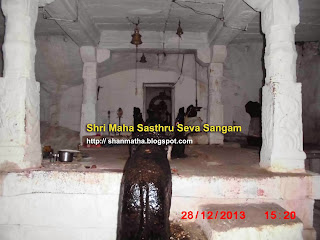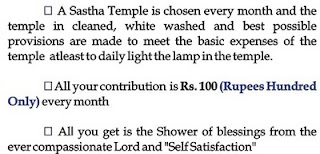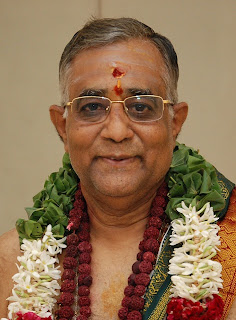Sasthaalaya Sevanam - A movement for restoring dilapidated Sastha temples
Swami Sharanam
We started this Sasthalaya Sevanam on this auspicious Ganesha Chathurthi day two years ago- We have ventured into a mission - the need of the hour - restoring the age old temples of Sastha. - Sasthalaya Sevanam
The sevanam had a great response and we were able to contribute to more than 17 temples... But over a period of time, there is a small lag in the participation. Not that devotees are not interested in participating.. But in this fast world, the priorities have changed and just because the contribution is very meagre by oversight, people miss it out.
For all those who are new - The Monthly Contribution is Rs.100 Only... and its purely a voluntary one.
One suggestion got from most of the devotees - is to plan for ECS so that automatically Rs.100 is trasferred every month...working on this line.. will update the details soon.
Iam coming to Chennai on 10th September; All interested devotees, Lets have a meeting there at Madippakkam Ayyappan Kovil. Will restructure the process and continue our service.
Read the text below and participate in the meritorious act of Sasthaalaya Sevanam.
Swamy Sharanam !
Lord Hariharaputra, Dharma Sastha or Ayyappa as he is fondly called, is the pratyaksha pesum deivam of this Kali Age.
“Prathyaksham tu Kalau”; “Kalau Sasthru Vinayakau” says Sasthras.
Sastha sahasranamam calls him "Sarva Desikaya Nama:". True to this we have Sastha temples all over the world. Though the temple of Sabarimala is very much popular, it will be surprising to know that there are almost 6000 Sastha temples throughout Tamilnadu and Kerala.
Many of these temples are of puranic age and many of them are atleast 1000 years old. YEARS of neglect have led to the decay of the abodes of our Lord and if the present state of neglect continues, they may soon pass into the pages of history .
It is indeed heart rending to be a mute witness to the sight of our beloved Lord seated in a dilapidated temple with cracked walls & leaking roof. The places which once resounded with the chants of vedas , puja ,his sharanams and bhajans are now bereft of even the simple duty of lighting lamps.
To keep surcharged the atmosphere with divinity ,it is up to us devotees to change the present condition & restore the temples to its pristine glory.
Members of Maha Shastru Seva Sangham have after consultation with blessings of eminent Guruswamis , come out with a plan named "Sasthaalaya Sevanam "
Our Participation:
Each month a Sastha temple would be chosen, the temple cleaned, white washed and best possible provisions made to meet the basic expenses of the temple & ensuring daily lighting of lamps and neivedyam to the Lord.
To meet this expenses, each devotee can voluntarily contribute Rs.100 every month.
The status of work done on the Temple of the Month will be updated every month on our websitewww.mahasastha.com
WHAT WE GAIN FROM THIS ACT
By contributing Rs.100 per month for this Sasthaalaya Sevanam, along the the boundless grace of Lord Dharma Sastha, we will definitely get another great return called self satisfaction.
We request you to participate in the meritorious act of Sasthaalaya Sevanam, introduce this plan to Ayyappa devotees and ensure blessings of Lord Dharma Sastha on all.
Ever in divine service,
Devotees
Shri Maha Sasthru Seva Sangam
------------------------------------------------------------------------------------
Your contribution to the above service would make it very successful and obtain the blessing of Lord Dharma Sastha not only to you but your entire parampara.
THIS IS PURELY A VOLUNTARY CONTRIBUTION and Those who are interested to join hands with us can contact any of us below:
Please draw your Cheque / Draft in the name of "Shri Maha Sasthru Seva Sangam", Coimbatore & can be sent to any one of the following addresses:
Or You may make an online transfer or Monthly ECS or You may pay directly to our Bank Account :
Name : "Shri Maha Sasthru Seva Sangam"
-----------------------------------------------------------------------
Karur Vysya Bank A/c No. 1121 135 822
IFSC Code : KVBL0001121 ( Current Account )
Nanjappa Road Branch, Coimbatore
Canara Bank A/c No. 2988 101 015671
IFSC Code :CNRB0002988 ( Savings Account )
PSG Arts College Branch, Coimbatore
-----------------------------------------------------------------------
V. Aravind Subramanyam
President
94 B, Third Street,
Tatabad, Coimbatore 12
Ph: 99946 41801
Email : aravindsastha@gmail.com
Those who wish to Contribute - Download the Form from
Here:
Or Contact :
Sri H. Balasubramanian Iyer
H 3/12, Jal Padma,Bangur Ngr,
Goregaon (W) Mumbai
Ph :97692 09146
Email : bala.iyer1@gmail.com
K.Ganesh.
Co-Ordinator,
No-5/508, 18th street, 4th sector, kk nagar, chennai-600078
Ph: 9677277277
Email : ganeshtnj0609@gmail.com
Sri Kamesh,
Co-Ordinator,
102, Sai Chhaya CHS,
Near Manibai Niwas,
Old Dombivli Road,
Shastri Nagar,
Dombivli West,
Thane Dist – 421 202, Mumbai
Ph : 98218 33002
Email : gkameshiyer@gmail.com
Sri Hari ShankarNarayanan
Co-Ordinator,
250, 2nd Main Rd, Jagdish Ngr,
Nw Tippasandra Post, Banglore
Email : hari.snarayan@gmail.com
------------------------------------------------------------------------------------
 There are several old shrines of ayyan in the tamil country and their antiquity is supported by the mention of such shrines in the shilappadhikAraM.
There are several old shrines of ayyan in the tamil country and their antiquity is supported by the mention of such shrines in the shilappadhikAraM.  We inquired about the Lord with the local people and we were advised to try with the hill nearby. It is rocky hill suddenly rises next to the temple. There are many semi finished rock-cut temples in this hill. This belongs to the 8th century cave temples. The centre portion of a rock is excavated in a rectangular fashion and in the middle the temple is sculpted from a single piece of rock. The temple has a centre hall for the main deity and Lord Vinayaka is worshipped. This temple style reminds us of the Kailasnath temple of Ajantha and Ellora. We also have few jain carvings and caves in which the Jinas lived.
We inquired about the Lord with the local people and we were advised to try with the hill nearby. It is rocky hill suddenly rises next to the temple. There are many semi finished rock-cut temples in this hill. This belongs to the 8th century cave temples. The centre portion of a rock is excavated in a rectangular fashion and in the middle the temple is sculpted from a single piece of rock. The temple has a centre hall for the main deity and Lord Vinayaka is worshipped. This temple style reminds us of the Kailasnath temple of Ajantha and Ellora. We also have few jain carvings and caves in which the Jinas lived. Climbing further, On top of a rocky terrain is the archaic shrine of Sastha. Outside the temple a very huge stone idol of Boothathaar Swami is also seen. There is a small cave nearby and inside which Lord Sasta sits in silence flanked by his two wives. and it gives an indication that this might have been a very big Kshetra from time immemorial.
Climbing further, On top of a rocky terrain is the archaic shrine of Sastha. Outside the temple a very huge stone idol of Boothathaar Swami is also seen. There is a small cave nearby and inside which Lord Sasta sits in silence flanked by his two wives. and it gives an indication that this might have been a very big Kshetra from time immemorial.























